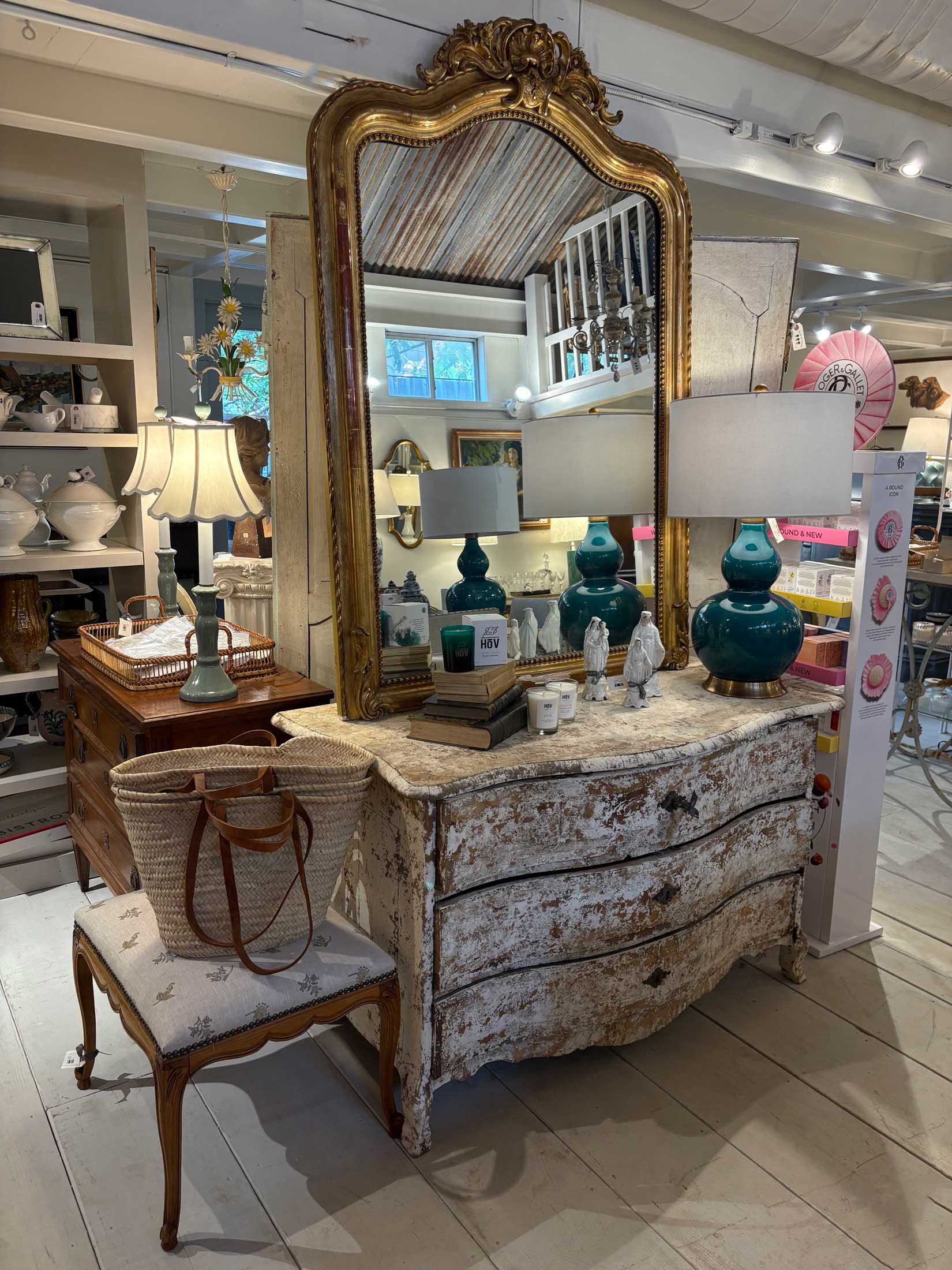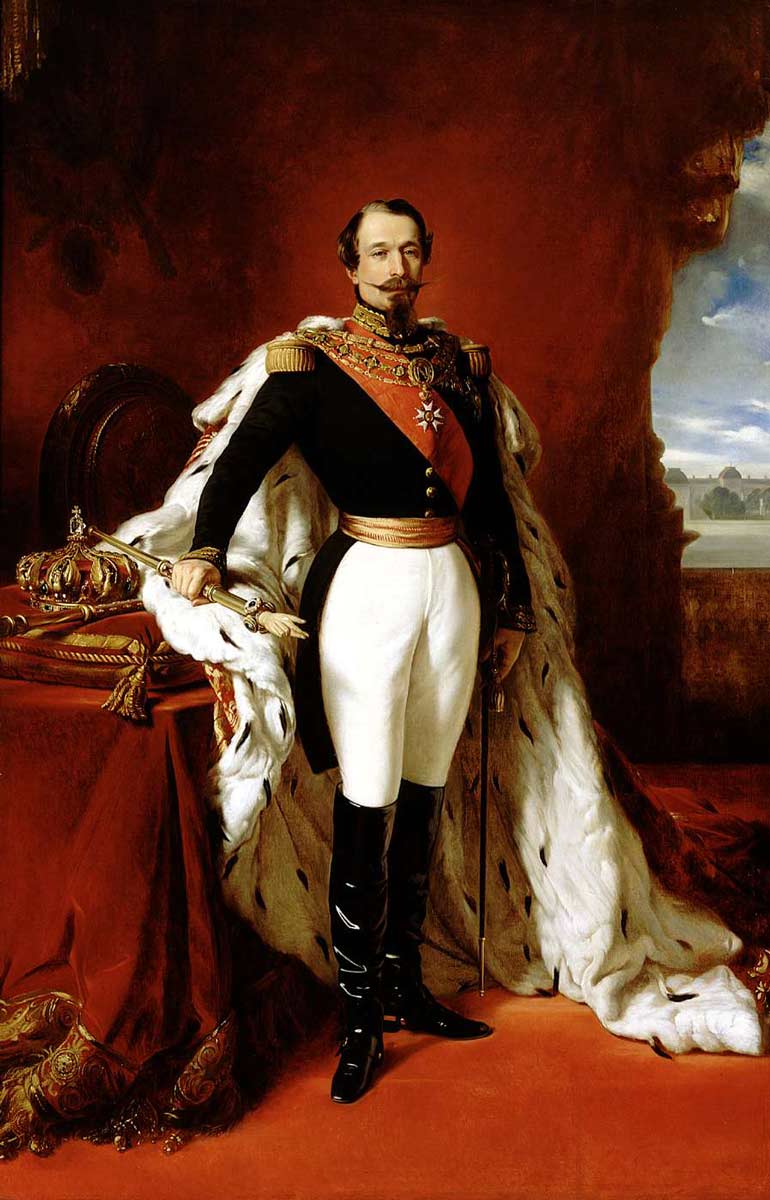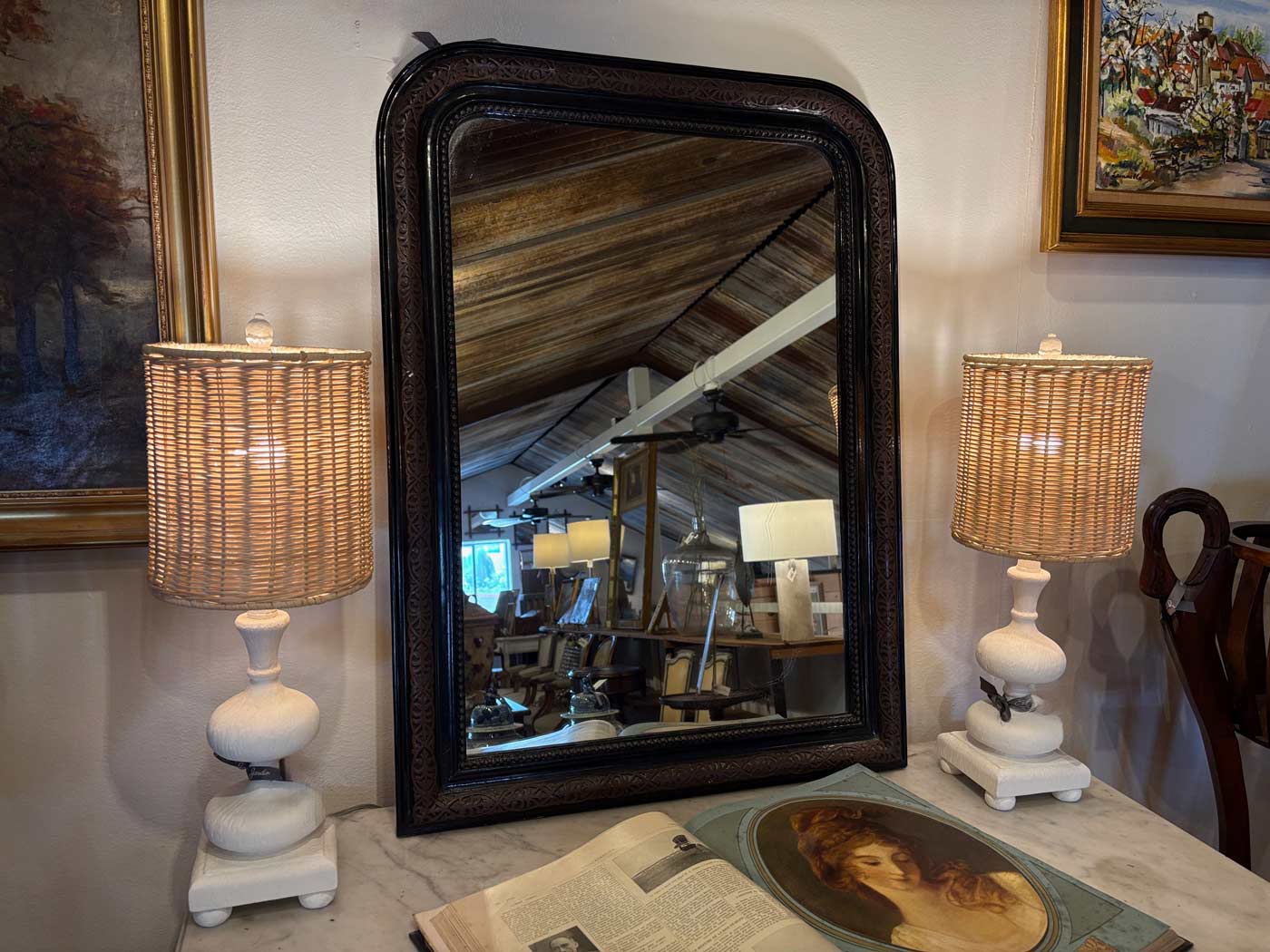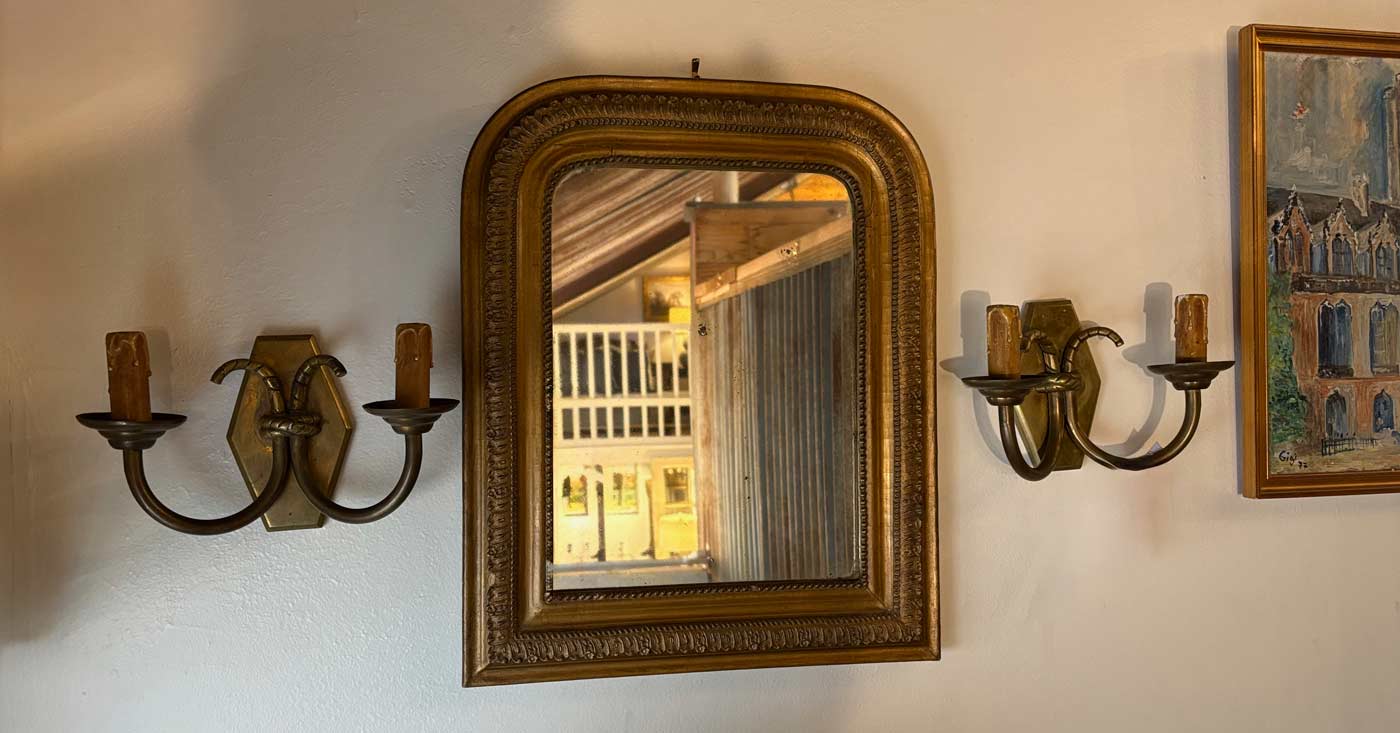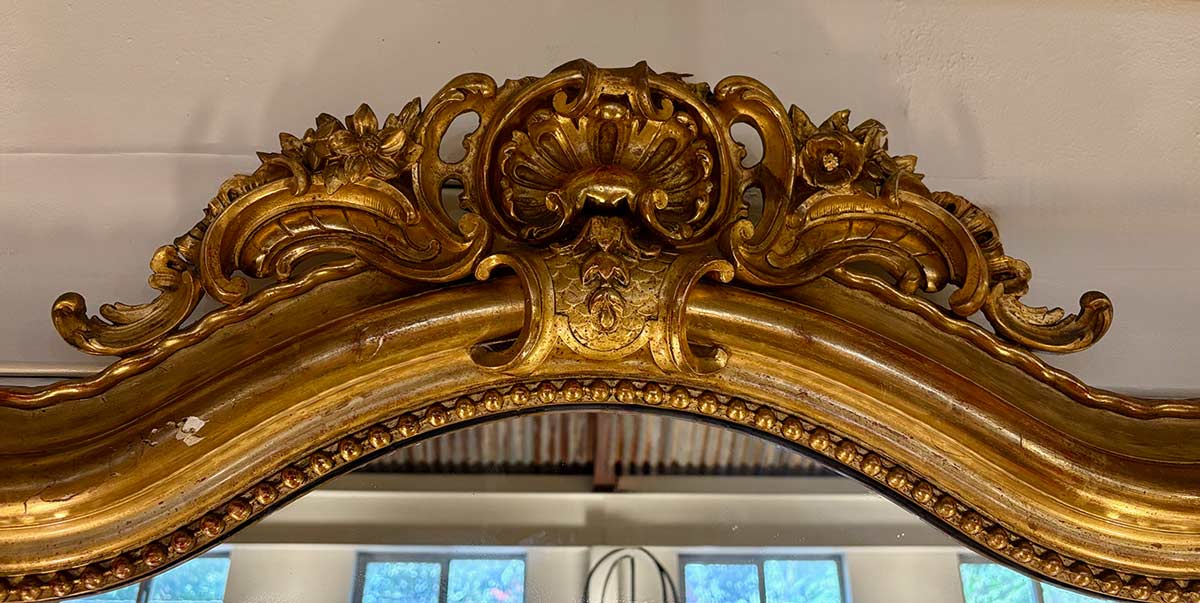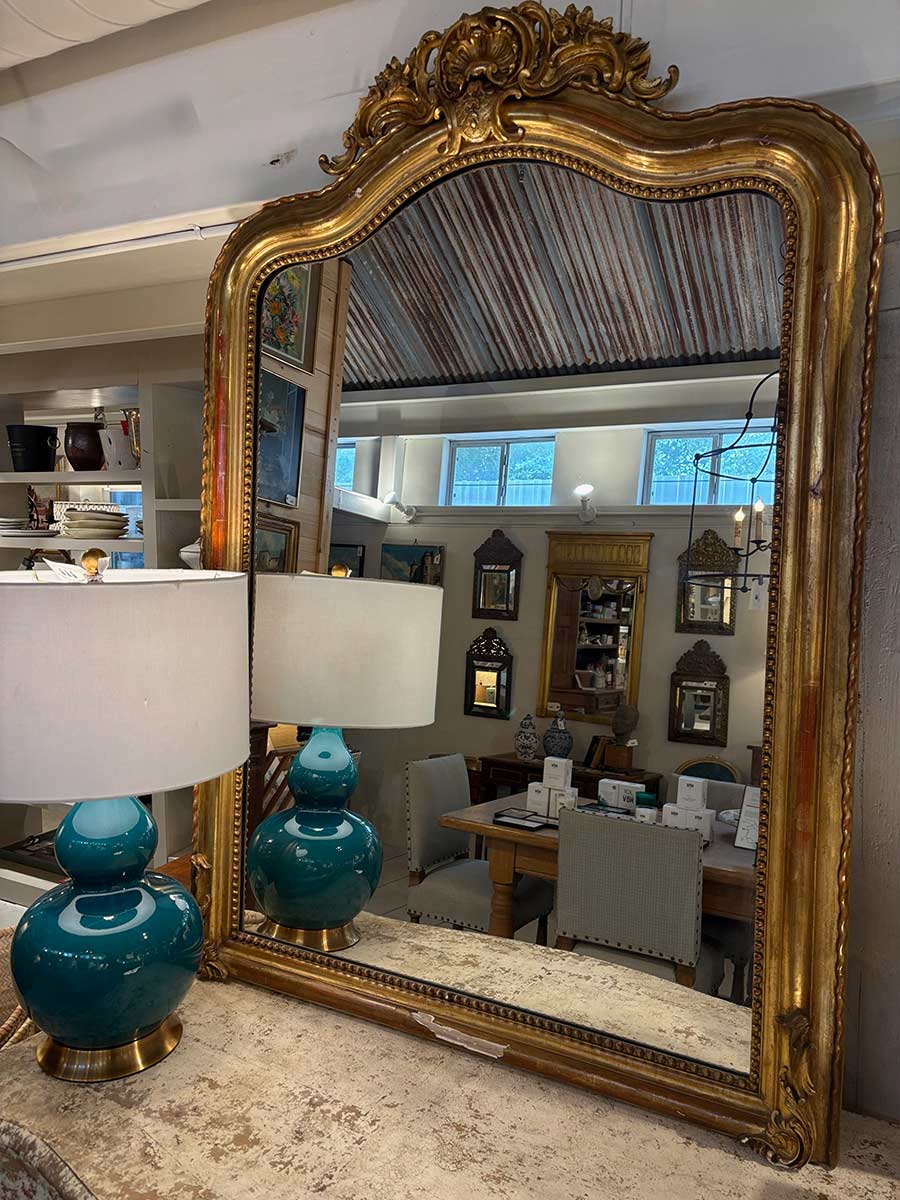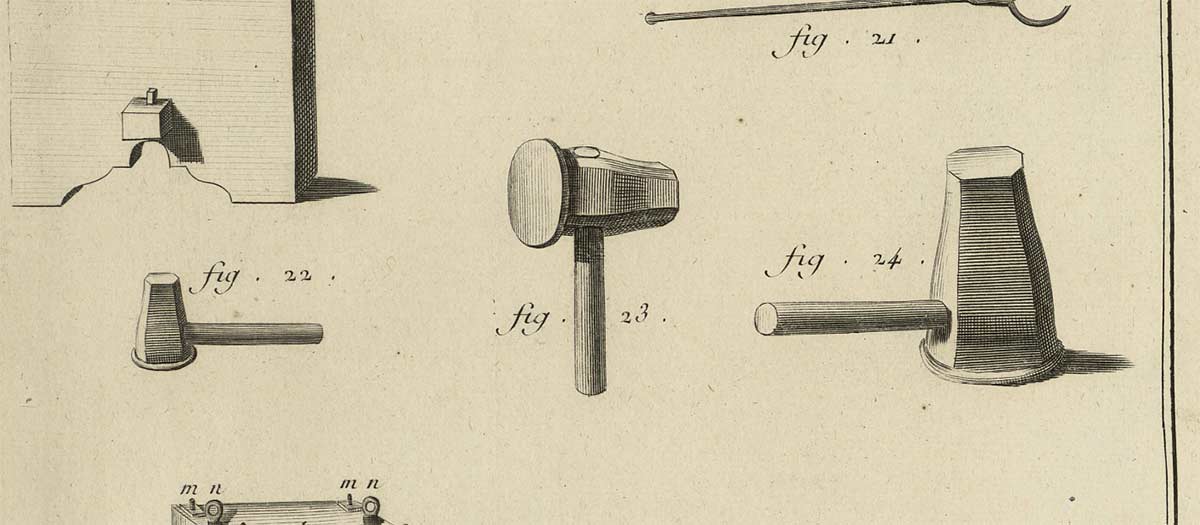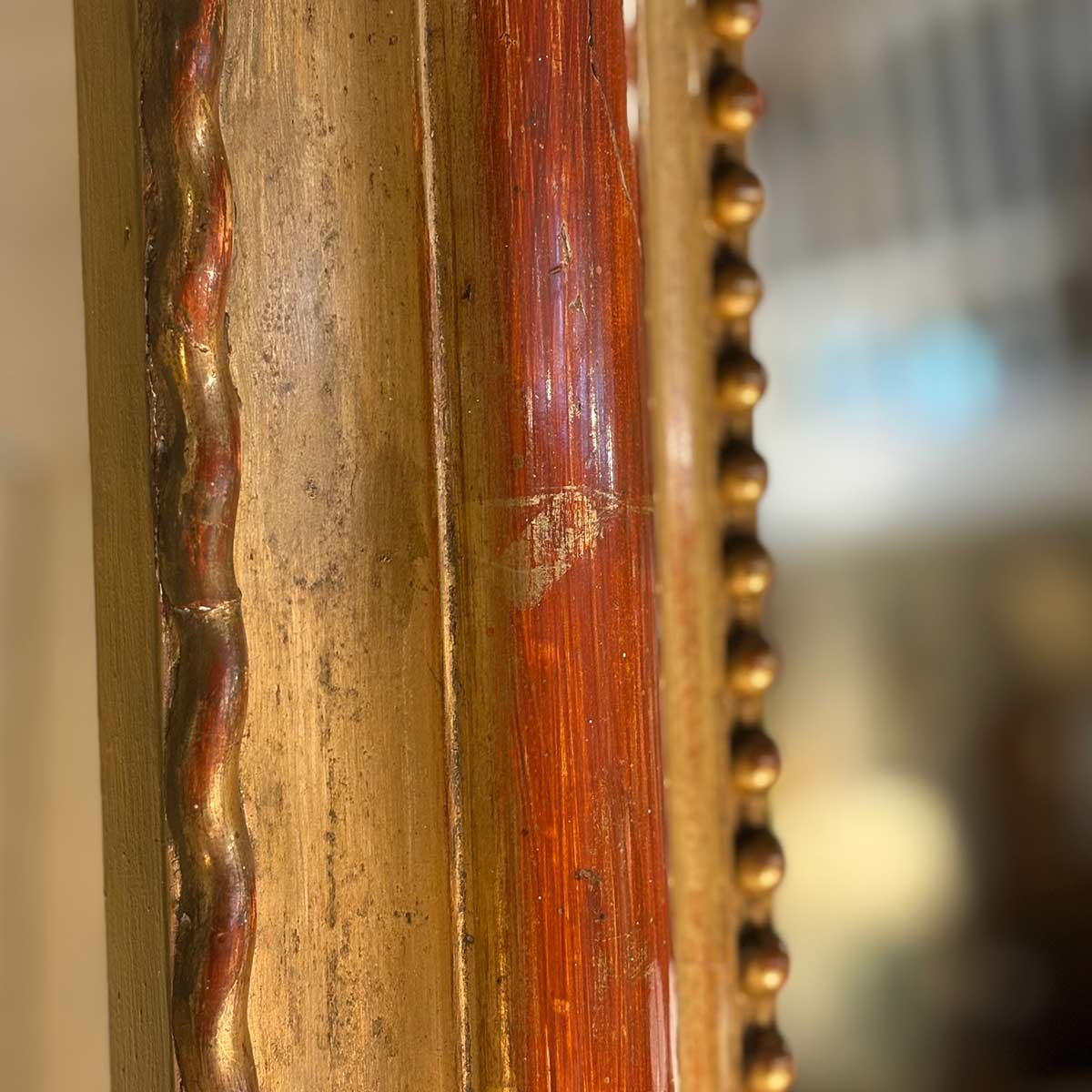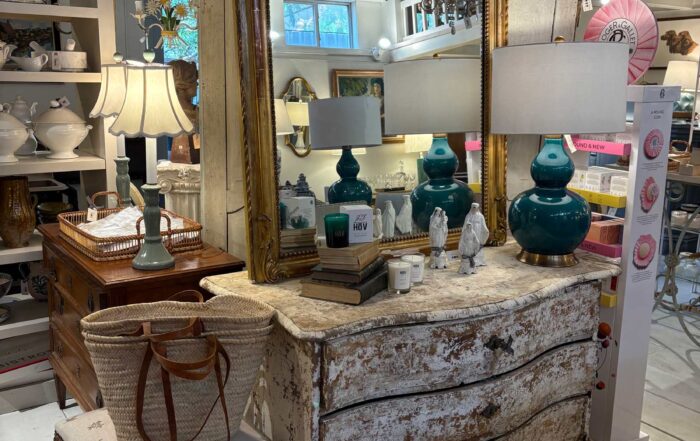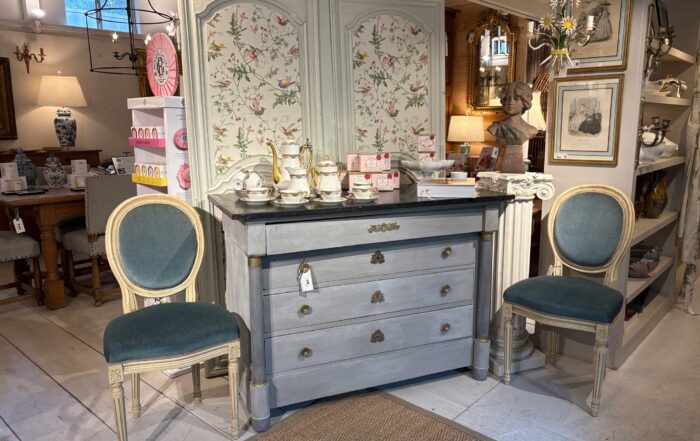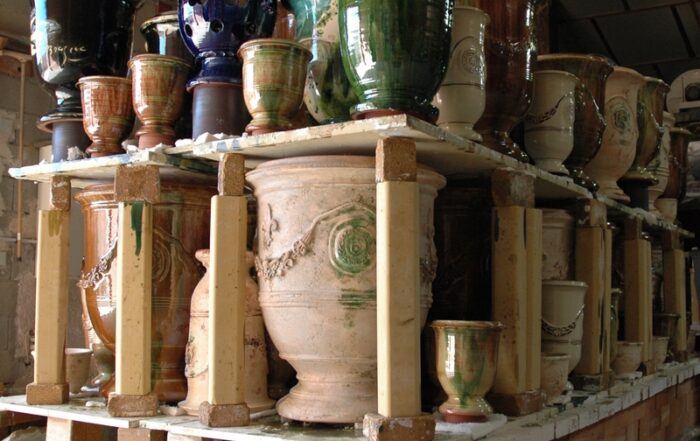Featured Today! A Napoleon III-period Louis Philippe Mirror
We just got in a new antique miroir at our Houston Shop and it is, “how do you say,” stunning. It was featured in one of our previous articles, but the craftsmanship and skill that went into the gold leaf of its gilt wood frame is incredible, and this fine piece deserves its own spotlight.
Napoleon III, but Louis Philippe? Explain s’il vous plaît
The artistic styles of the period during which Napoleon III ruled (1852-1870) drew inspiration from past eras in France. It brought back hallmarks of the classic Empire Style (1804-1815), along with styles during the reign of Louis Philippe, the “Citizen King” (1830-1848).
The shape of this mirror, with its squared bottom edges and rounded top corners, makes it a classic “Louis Philippe mirror,” and this style remained popular for decades after the Citizen King’s rule. Here are two more fine antique Louis Philippe mirrors we have at our Houston Shop.
It’s the addition of the shell crest up top, also called a cartouche, that identifies the classic imperial extravagance of this mirror as that from Napoleon III’s era. This is why it can be called a “Napoleon III-period Louis Philippe Mirror.”
Ooh la la! So tell me more about its gilt frame
This mirror’s frame and cartouche are gilded and covered in true gold leaf. Gold leaf is extremely delicate, typically microns of an inch thin, so to have a Napoleon III-period mirror, artisinal-crafted around 1860, that is in such great shape to this day is very special.
Producing gold leaf was an extremely arduous process during the 18th and 19th centuries. True authentic gold leaf is actual gold, and its creation begins from a solid gold bar. Here’s how artisans hand-made gold leaf during Napoleon III’s reign.
How Gold-Beaters of the period made Gold Leaf
Ateliers of Gold Beaters, called Batteur D’Or in French, would take molten gold from a melting pot and pour it into a rectangular mold. Once it cooled and hardened, the batteur had a solid gold bar. The bar would then be run through a hand cranked rolling mill, coming out as a thin sheet.
In the print above, taken from Dictionnaire raisonné des sciences, des arts et des métiers (published in 1772), the artisan on the left can clearly be seen at the melting pot, with the mold for the bar on the ground to the right of his feet. Closer to the right of center, 2 craftsmen are operating the hand-cranked rolling mill, running the gold bar through to produce the thin sheet.
The sheet would then be cut into squares, layered, and hammered, until the desired thinness was achieved. To the left of the rolling mill is a craftsman who is beating the layers of gold sheets. This batteur used a variety of weighted hammers to do this, and would repeat the cutting, stacking and hammering process hundreds of times to create the final gold leaf product.
How the gilt wood frame was made
Knowing how the gilded frame was made really makes it an even more incredible piece.
The initial wood frame would be coated in gesso, a white plaster that provided the wood with its smooth surface. The gesso is then covered with red bole, a type of oxidized red clay paint. Finally, the gold leaf is skillfully applied, piece by piece, across the whole of the wood frame.
Today, the red areas of the frame are where the delicate gold leaf has come off over time, allowing the red bole layer to shine through. Even though some of this gold leaf has fallen off though, we are able to appreciate the gilt finish even more, because now we can make out individual pieces of gold leaf. It is easy to imagine the batteur d’or painstakingly applying the gold leaf by hand in his atelier!
The white at the bottom corners of the frame are the original gesso layer, where both the gold leaf and red bole has come off over time.
These hallmarks of authenticity reflect a mirror with an incredibly special provenance. It would look stunning on a buffet in a dining room or a commode in a bedroom. Come stop by to say bonjour, and behold this beauty with your own eyes!
Sign up to hear about upcoming events at all of our locations, from exclusive container first-looks to Saturday sip & shops.

